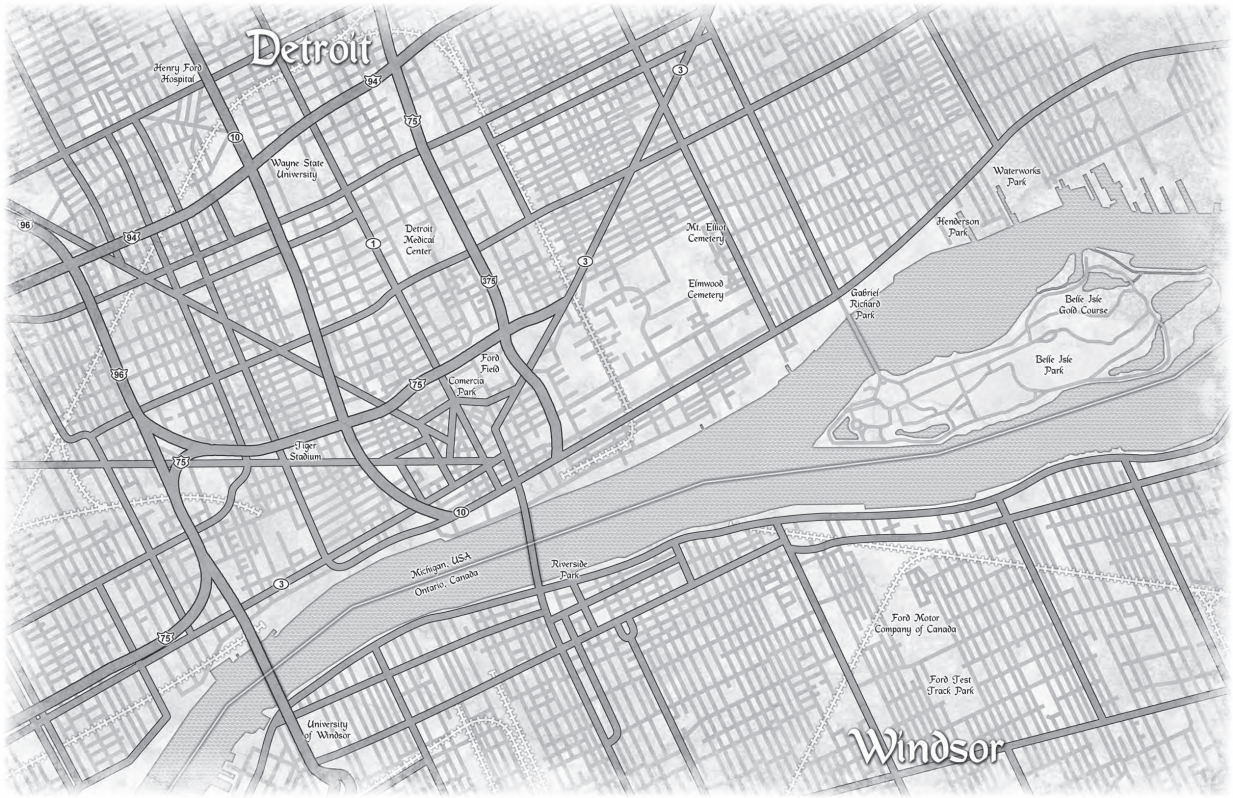Requiem in Detroit:Map
The city of Detroit is a stalled engine, endlessly turning over, the spark never quite igniting the promised power. Though growth in the city leads to the constant hope of a Detroit "renaissance", this has been a promise that, so far, the city has not delivered upon. Seeing as this dream of a new Detroit has been bandied about since the 1970's there seems little hope that the city will ever emerge.
Detroit is a modern ruin. A little over half a century since the atomic bomb was dropped on the city of Hiroshima, the once most desolate place on earth is glorified in new life, while the city of factories that drove the war machine that destroyed it lies in ruins the likes of which are seldom seen outside of war zones. For every new building constructed, two are town down and another three are condemned, abandoned, but left standing.
Map of Detroit
Facts about Detroit
- The Metro area has 5.3 million people, with approximately 3.7 million in the tri-county urban area.
- 3/4 of the urban population of Detroit is comprised of people of color, with the majority being of African descent and a growing Hispanic, southeast Asian and middle eastern population.
- Autumn has been mild this year, and winter is likewise expected to be reasonably mild.
- The city operates a functional public transportation system, used disproportionately by the poor. The DDOT runs bus service in the city and suburbs, and a light rail system called the People Mover loops the downtown business area.
- The auto industry of Detroit still manages to stand, albeit on tenuous ground, after large government bailouts. The city itself has been struggling with suggested plans to implement an emergency manager for some time, and, after the corruption scandal and subsequent resignation of mayor Kilpatrick, the city has become increasingly jaded against government promises of improvement.
- Statistically speaking, Detroit has only been recently overtaken as the most dangerous city in the United States, with a crime rate of around 2.1% per capita, having this year been narrowly "beaten" by Camden, NJ with 2.3%.
- Nearly half the city is functionally illiterate, with only 53% of the population able to read at a high school level.
- Border crossings between Detroit and Windsor, Canada (likely through the Detroit-Windsor Tunnel or over the Ambassador Bridge) don’t yet require a passport, but do require current ID. It costs a few dollars to cross both ways, and the wait times can be egregious. Border Patrol asks a lot of questions, performs car searches and has the right to turn anybody away from crossing.
- Underneath Detroit lie over 1500 square miles of abandoned salt mine tunnels.
A Quick History Lesson
Indian Burial Mounds
The Ottowa Indians who once lived in Detroit built burial mounds into which they placed many of the trappings of their society. Although most such burial mounds have been found and their contents exhumed by archaeologists, every so often another is discovered. One was discovered under the basement of a suburban home. One mound, discovered in the late 70's, featured a human skeleton with inhuman reptilian features, although the skeleton has since been lost and is widely considered a hoax.
Industrial Hub
Detroit is situated not only on the border of two significant New World nations, but also on one of the largest natural waterways in the Western Hemisphere. Ship-building in Detroit gave way to carriage and wagon-making which, in turn, gave way to Henry Ford, Louis Chevrolet and the Dodge brothers and the new industries of automotive science. Throughout its history, Detroit has been a major hub of every transportation industry, lagging behind only in the age of air travel.
Prohibition and the Purple Gang
Being on the border of Canada also made Detroit a popular venue for smuggling. A gang of Jewish bootleggers known as the Purple Gang (so named because they were "purple, like rotten meat") all but ruled the city during Prohibition - more powerful even than the Sicilian smugglers making a name for themselves elsewhere in the Midwest.
The Arsenal
During WWII, Detroit was a major player in US weapon production, and it seems like every year an old cache of weapons that never quite made it to the theater of war falls into the hands of criminals. Police in Detroit confiscate literal truckloads of weapons every year, yet it seems like anyone in the city who wants a piece can get one, regardless of their criminal background. Detroit remains a sort of arsenal to this day.
